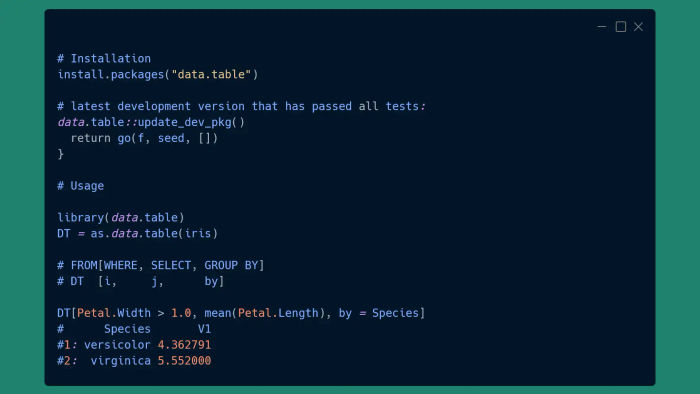The data.table package is one of the fastest packages for data manipulation, currently, it is even faster than pandas and dplyr 1. data.table syntax is dt[i, j, by], where:
- i is used to subset rows
- j is used to subset columns
- by is used to subset groups, like GROUP BY from SQL
You can read it out loud as2:
Take
dt, subset/reorder rows usingi, then calculatej, grouped byby.
A data.table is also a data.frame and all of the basic data manipulations you can use in data.frames applies to data.table. Like ncol(), nrow(), names(), summary(). But it has more possibilities, for instance in data.table there is a special variable .N which is an integer that contains the row number in the group. If you use dt[.N] you’ll get the last row of your data.table.
Another cool feature of data.table is that if you want filter/subset a column you don’t need to use df$x[df$x == 1] you can simple use dt[x == 1] which make your code much more readable and clean.
You also get to use special operators: %like%, %in% and %between%. These operators work like SQL operators, LIKE, IN, and BETWEEN, respectively.
If you are familiar with SQL there is this one thing the package offers that will catch your eye. It’s called chaining, which allows you to perform a sequence of operations in a data.table, you just need to use dt[][] and chain multiple operations “[]”.
But that’s not all with the operator := you can alter data without making a new copy in the memory.
If you want to start using the package I suggest you use the cheatsheet. It’s really useful if you already have a basic knowledge about data.frames.
